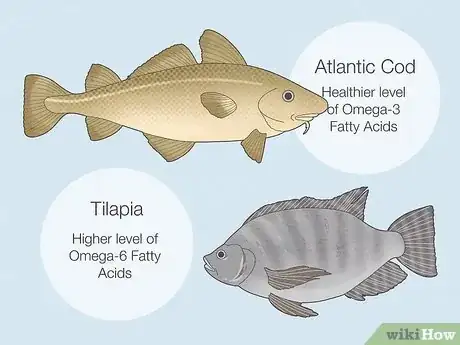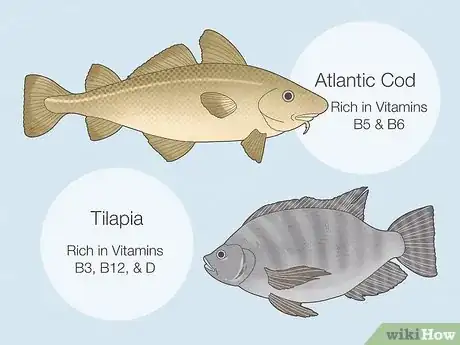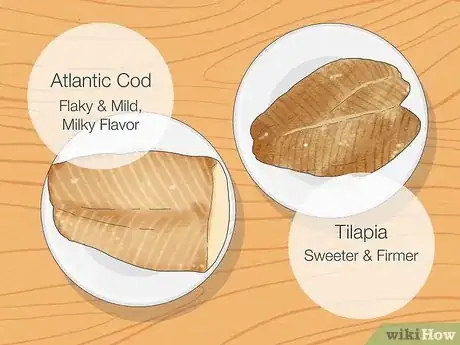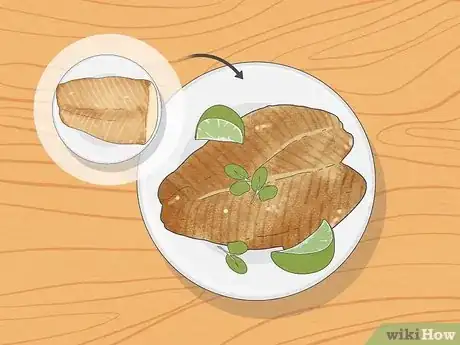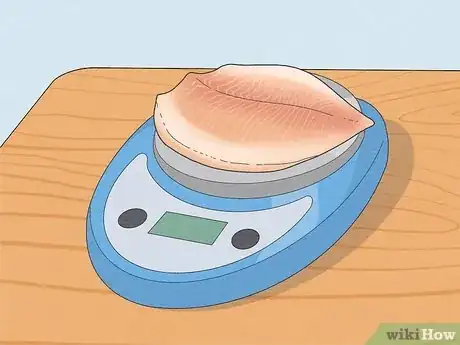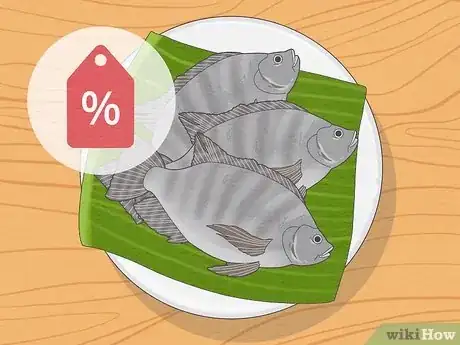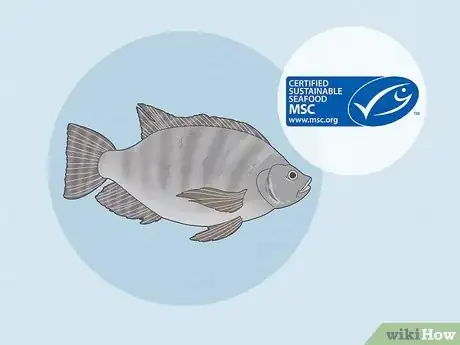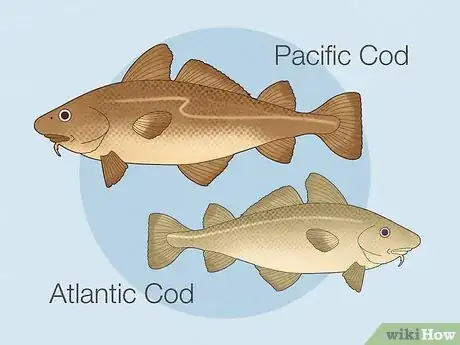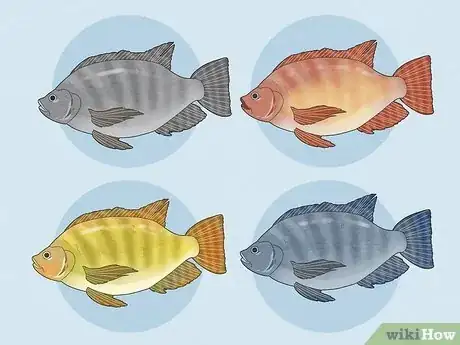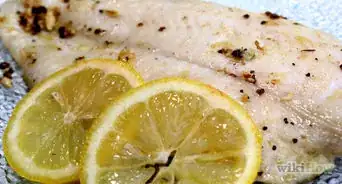This article was co-authored by Elsie Glasu-Atunuwa and by wikiHow staff writer, Dan Hickey. Elsie Glasu-Atunuwa is a West African Chef and the Founder of Trices Cafe and Lounge in San Antonio, Texas. Elsie learned to cook from her mother, using only the finest ingredients to create great flavors. Her mother’s training and her own imagination allow her to create delicious traditional West African dishes to satisfy customers, friends, family, and colleagues. Her team specializes in serving dishes from Nigeria, Ghana, and Cameroun. They also offer catering for all occasions. Elsie studies General Science and holds a doctorate degree in Nursing from Grand Canyon University.
There are 14 references cited in this article, which can be found at the bottom of the page.
This article has been viewed 2,762 times.
There may be plenty of fish in the sea, but cod and tilapia are among the most popular and widely eaten in North America and around the globe. Although these fish share some similarities in taste and nutritional value, they’ve got some important differences to consider before you decide which filet to pick up for dinner. In this article, we’ll break down the nutritional and flavor profiles of each fish, plus compare their cost, sustainability, and more. You might just have a craving for a fresh filet once you’re done here!
Things You Should Know
- Cod is considered healthier than tilapia because it’s leaner, contains more Omega-3 fatty acids, and has lots of other nutrients like niacin, B vitamins, and choline.
- Tilapia and cod have a similar taste and texture. Tilapia is slightly sweeter and firmer and can be substituted for cod in a variety of dishes like fish and chips or fish tacos.
- Tilapia is more sustainably sourced than cod since it’s a freshwater fish that can be farmed in a variety of habitats and feeds on plant-based food.
Steps
Warnings
- Cod and tilapia are great sources of lean protein, but should only be eaten 2-3 times per week to avoid ingesting a high level of mercury.[15]⧼thumbs_response⧽
References
- ↑ https://www.eatthis.com/fish/
- ↑ https://www.nutrition-and-you.com/tilapia-fish.html
- ↑ https://safebeat.org/cardiac/heart_health/is_cod_healthy_the_health_benefits_and_side_effects/
- ↑ https://cookingchew.com/what-is-codfish.html
- ↑ https://tastylicious.com/what-does-tilapia-taste-like/
- ↑ https://tastylicious.com/what-does-tilapia-taste-like/
- ↑ https://americasrestaurant.com/cod-substitutes/
- ↑ https://www.epicurious.com/expert-advice/fish-substitutes-salmon-tuna-cod-article
- ↑ https://www.eatlikenoone.com/costco-fish-guide-2022.htm
- ↑ https://sustainablefisheries-uw.org/fishery-feature/atlantic-cod-part1/
- ↑ https://thefishsite.com/articles/tilapia-a-nutritious-environmentally-friendly-fish
- ↑ https://thehealthyfish.com/how-to-tell-if-youre-buying-sustainable-ethically-produced-seafood/
- ↑ https://www.britannica.com/animal/cod-fish-Gadus-species
- ↑ https://www.azgfd.com/fishing/species/tilapia/
- ↑ https://www.fda.gov/food/consumers/advice-about-eating-fish
